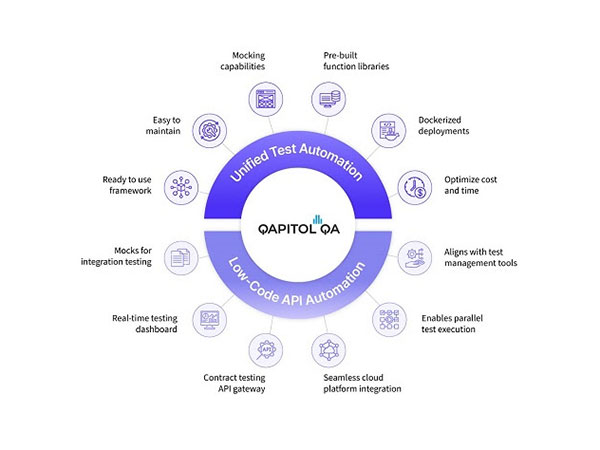
Can a Balanced Advantage Fund Help you Withstand Market Volatility?
Nov 15, 2023
NewsVoir
Pune (Maharashtra) [India], November 15: A Balanced Advantage Fund (BAF) is a hybrid mutual fund scheme that dynamically manages its portfolio between equity and debt depending on market conditions. These funds aim to optimize the return potential by dynamically shifting between asset classes based on market opportunities.
BAFs have the flexibility to invest majorly in equity, debt or have balanced exposure to both, depending on the fund manager's view of the prevailing conditions. This dynamic allocation ability seeks to potentially generate returns in different market conditions, making them suitable for investment through all economic cycles.
How can balanced advantage funds help in a volatile market?
Traditional asset allocation approaches involve maintaining fixed percentages of equity and debt exposure no matter the market condition. For example, an aggressive hybrid fund may be mandated to allocate 65% in equity and 35% in debt at all times.
However, market cycles are never static and different asset classes behave differently during economic ups and downs. A BAF does not have to adhere to rigid allocation percentages. This helps balanced advantage funds to capitalize on opportunities and manage risks effectively through different market phases.
Balanced advantage fund investment benefits
All season performance
By adapting to changing market conditions, BAFs aim to deliver returns in bull as well as bear phases. When equity markets are booming, the fund's equity exposure helps capture the upside. During downturns, debt holdings help cushion losses.
This adaptive, flexible investment approach makes BAFs suitable for long term investment goals. Investors need not worry about market fluctuations and can stay invested throughout without attempting to time their entry and exit.
Downside mitigation
Since BAFs can quickly increase debt exposure during volatile phases, investors gain a certain measure of downside mitigation from sharp equity market corrections. Debt acts as a risk balancer, complementing the relatively higher return potential of equities over the long run.
This benefits risk-averse investors who wish to participate in equity markets but do not want to take on high volatility. BAFs seek to offer a balance of upside potential and reasonable downside buffers.
Flexible asset allocation
Professional fund managers continuously monitor market trends and adjust allocations for optimal risk-adjusted returns. The 'active' allocation approach is more cost-effective compared to individuals separately investing in multiple funds and frequently switching between them based on their views.
Diversification benefits
Combining both debt and equity in a dynamically managed way offers better diversification than pure play funds. Different asset classes have varying return correlations and tenors of market cycles. Mixing them based on opportunities can enhance the risk-adjusted return potential over the long term compared to concentrating on a single asset.
How do BAFs overcome the limitations of other hybrid schemes?
While traditional hybrid funds also invest in equity and debt, their allocation constraints mean they often fail to adapt to extreme market movements.
Aggressive hybrid funds
Aggressive hybrid funds have high equity allocation limits ranging from 65-80% which aim to generate equity-like returns. However, during steep corrections they cannot quickly ramp up debt holdings and may decline sharply.
Conservative hybrid funds
On the other hand, conservative hybrid funds with 10-25% equity mandates cannot meaningfully participate in bull markets. Their lower equity caps may prevent fund managers from maximizing the upside potential when markets are surging.
Fixed income funds
Debt schemes like liquid and short-term income funds focus more on mitigating impact of volatility than capital appreciation.
BAFs overcome these limitations through more flexible equity-debt rebalancing parameters. Their dynamic, unconstrained approach allows the optimization of returns in all types of market environments. Therefore, BAFs can be considered an 'all-weather' long term investment choice suitable across economic phases.
Keys to choosing a suitable BAF
While BAFs provide tremendous flexibility, not all schemes utilize this ability to the fullest. Some parameters to evaluate the various options are:
* Track the fund manager's record in effectively navigating different markets
* Extent of allocation shifts between equity and debt over past 5-10 years
* Consistency and success of returns across bull/bear phases
* Low portfolio churn, expense ratios and entry/exit loads
* Experienced fund management team with proven success
Investors must evaluate the long-term return delivery instead of short-term fluctuations to identify BAFs that can possibly serve as all-season funds over different economic cycles. An evaluation of quantitative as well as qualitative parameters is advisable before selecting the investment vehicle.
Their adaptive, flexible approach makes BAFs suitable not just for long term goals but also to meet any financial needs throughout varying economic conditions. Hence, these schemes can be considered deserving of the label - 'all-season funds'. For investors seeking returns across market environments, a carefully chosen BAF can effectively serve as a robust, long term investment avenue. Bajaj Finserv AMC is set to launch its yet another hybrid scheme, i.e., Balanced Advantage Fund. Visit the website to know more.
Mutual Fund investments are subject to market risks, read all scheme related documents carefully.
(ADVERTORIAL DISCLAIMER: The above press release has been provided by NewsVoir. ANI will not be responsible in any way for the content of the same)









